Coin Values Moving with Precious Metals: Up-Dated 12/8/2025: Gold $4212 | Silver $58.12
1941 Penny Value
One important feature of 1941 penny value is judging condition. Collectors assemble sets pay close attention to "Grade" of individual coins. A standard to each grade is used to judge condition. In the market values tend to adjust matching demand and scarcity.
Viewing the value chart highlights a premium begins with the Extremely Fine grade. Comparing your coin to grading images narrows its condition range.
Date and Mint Mark begin the process of reading the chart and determining variety of your coin. Follow with judging grade.
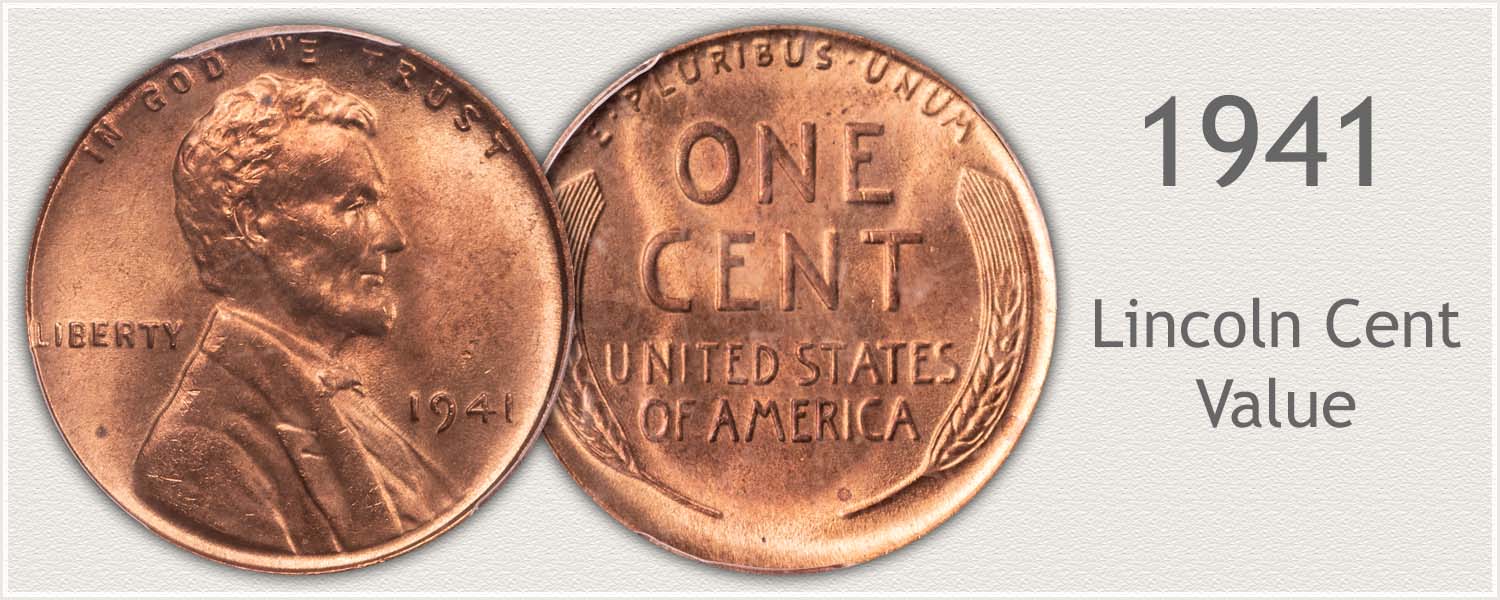
Steps Leading to Value:
- Step 1: Date and Mintmark Variety – Identify each date and its mintmark variety.
- Step 2: Grading Condition – Judge condition to determine grade.
- Step 3: Special Qualities – Certain elements either enhance or detract from value.
| 1941 Lincoln Penny Value | ||||
|---|---|---|---|---|
| Condition of Coin | ||||
| Date | Good | Fine | Extremely Fine | Uncirculated |
| 1941 Lincoln Penny Value Up-Dated | 2025 | |||
| 1941 | $0.05 | $0.11 | $0.15 | $1.86 |
| 1941 D | $0.05 | $0.15 | $0.43 | $3.26 |
| 1941 S | $0.06 | $0.15 | $0.35 | $3.36 |
Inspect closely each of your coins to separate it from the average date and condition wheat penny. Follow a three-part process.
Date | Mint Mark | Condition form the key elements to value.
Step One: Dates are inspected and mint marks are identified. Branch mints placed marks on the coin to identify their production. Each variety is listed on the chart.
Step Two: Compare the condition of your coin to images matching the amount of wear defining its grade. Each stage of wear is recognizable with the help of descriptions pointing to areas of focus.
Begin with checking Date | Mint Mark
Step 1: | Date and Mintmark Combination
Identify Variety of 1941 Wheat Cent
Need for minor coinage was met by a production of over 1 billion cents in 1941. Represents the first time in US history any coin was struck in such numbers. All three varieties combined totaled 1,108,178,000.
1941 Lincoln Penny
No Mintmark Under Date: Philadelphia Mint Struck the Coin
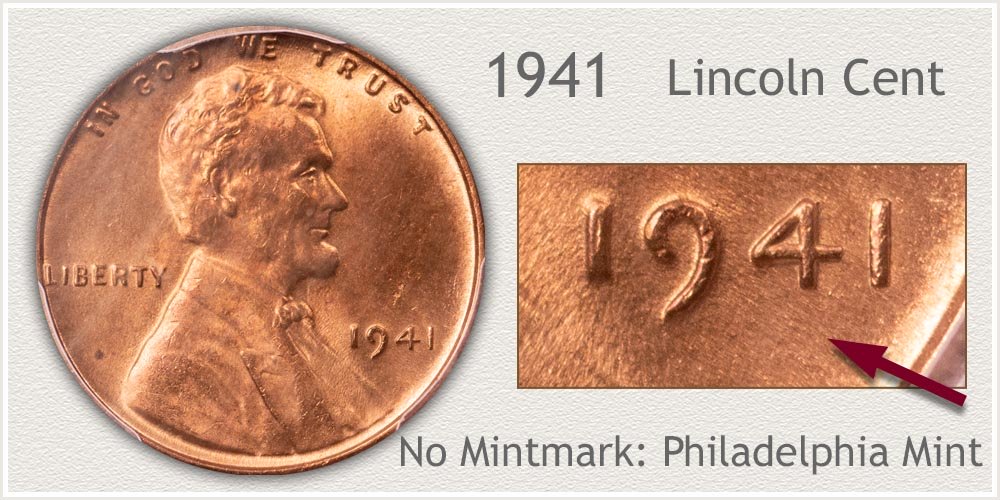
1941 represents the 6th highest mintage from Philadelphia mint. 887,093,100 wheat pennies struck. These are Abundant on the rarity scale; initial production provided a huge quantity to circulation.
In searching for higher value, look to the reverse side of the coin. Condition is represented by the amount of detail remaining in parallel lines along the upper ends of the wheat ears. Separated lines is an above average coin.
1941-D Lincoln Penny
"D" Mintmark Under Date: Denver Mint Struck the Coin
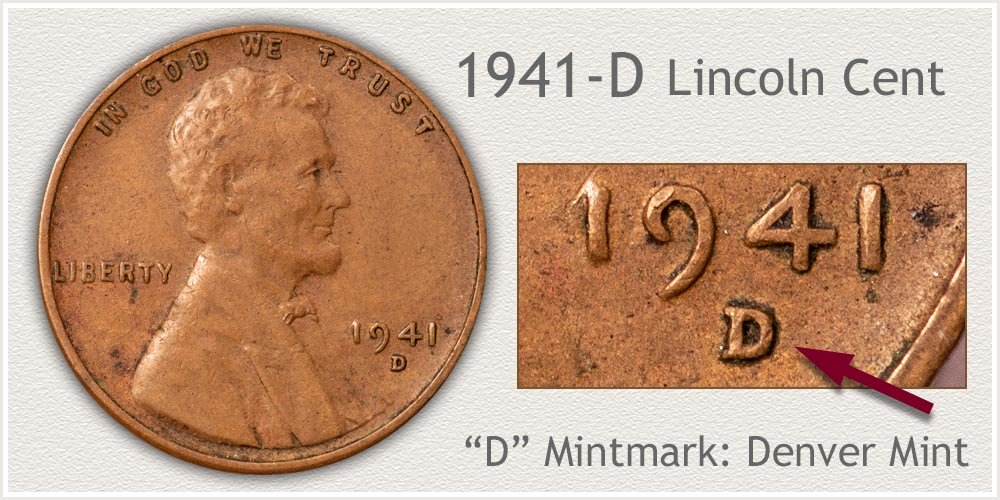
Ample coinage numbers from the Denver mint places this variety as Abundant on a rarity scale. A nice-looking coin without any distracting marks represents an affordable and desirable penny to a young collector.
Coin folders by Whitman and HE Harris split the wheat series with a second album starting with 1941. The year becomes an important place in a collection of wheat pennies.
1941-S Lincoln Penny
"S" Mintmark Under Date: San Francisco Mint Struck the Coin
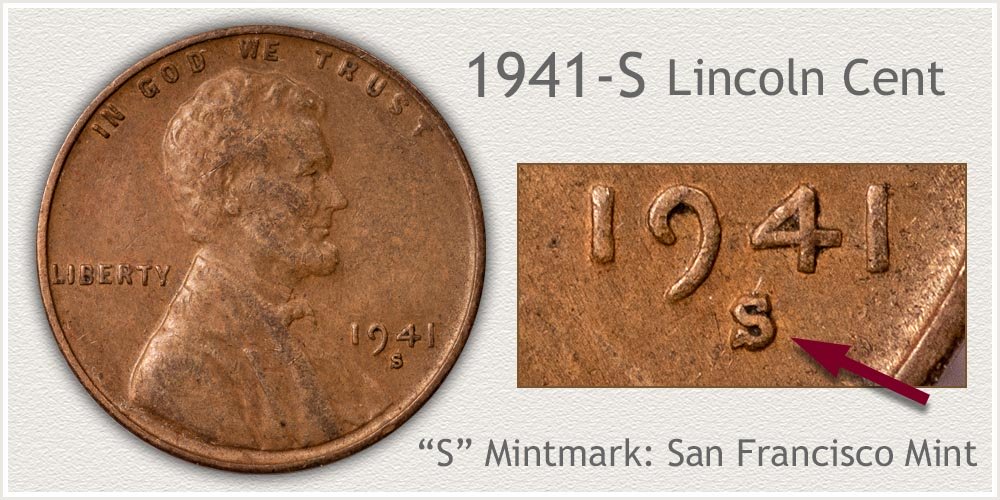
Values of San Francisco cents tend higher as a variety. On a rarity scale as Abundant, quantities are available to collectors. Setting them apart is both popularity and any found in nice condition.
Eye appeal of a coin is well received by collectors. Desirable are examples having fields and devices free of large marks. Inspect the rim as well, damage to sides is often subtle to notice, yet part of an inspection of coins.
Step 2: | Judge Condition to Identify Grade
Grading Confirms 1941 Lincoln Penny Value
Grade of an old penny is a definition used by collectors and dealers defining its condition. Grades are listed along the rows in the value chart. Each coin is judged, wear and surface preservation are noted. A comparison with the images of each grade visualizes these different grades.
Review the uncirculated example image first, it gives a good illustration of the complete amount of original detail on a coin without any wear to the surface.
Work over a soft surface and when viewing, tilt the coin under a light helping bring out subtle details.
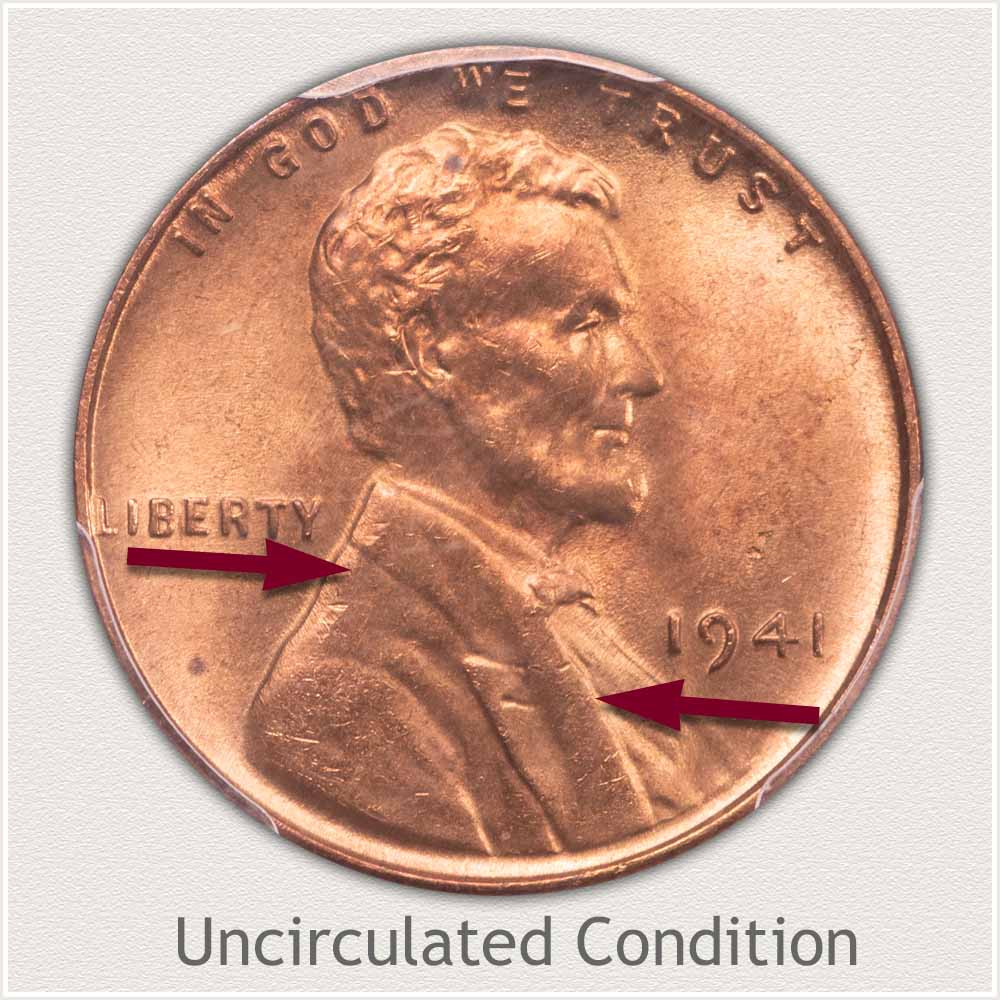
Uncirculated Grade: Many Lincoln cent collectors strive to assemble a stunning display of Mint State - Uncirculated pennies. Key to the condition of the coins is intact luster and no wear to the surface. To qualify as uncirculated grade, complete coverage of luster remains. It is a delicate shine prone to wear and smoothing. Inspect Lincoln's shoulder just below the lapel line, any wear would disrupt luster. Along the leading edge of the lapel is high in relief, touches of smoothing occur here as a coin begins to wear.
Strong details of Lincoln and lettering are noted on this 1941 wheat cent. Brightness of luster is complete, complementing the design. A visually attractive 1940's wheat penny.
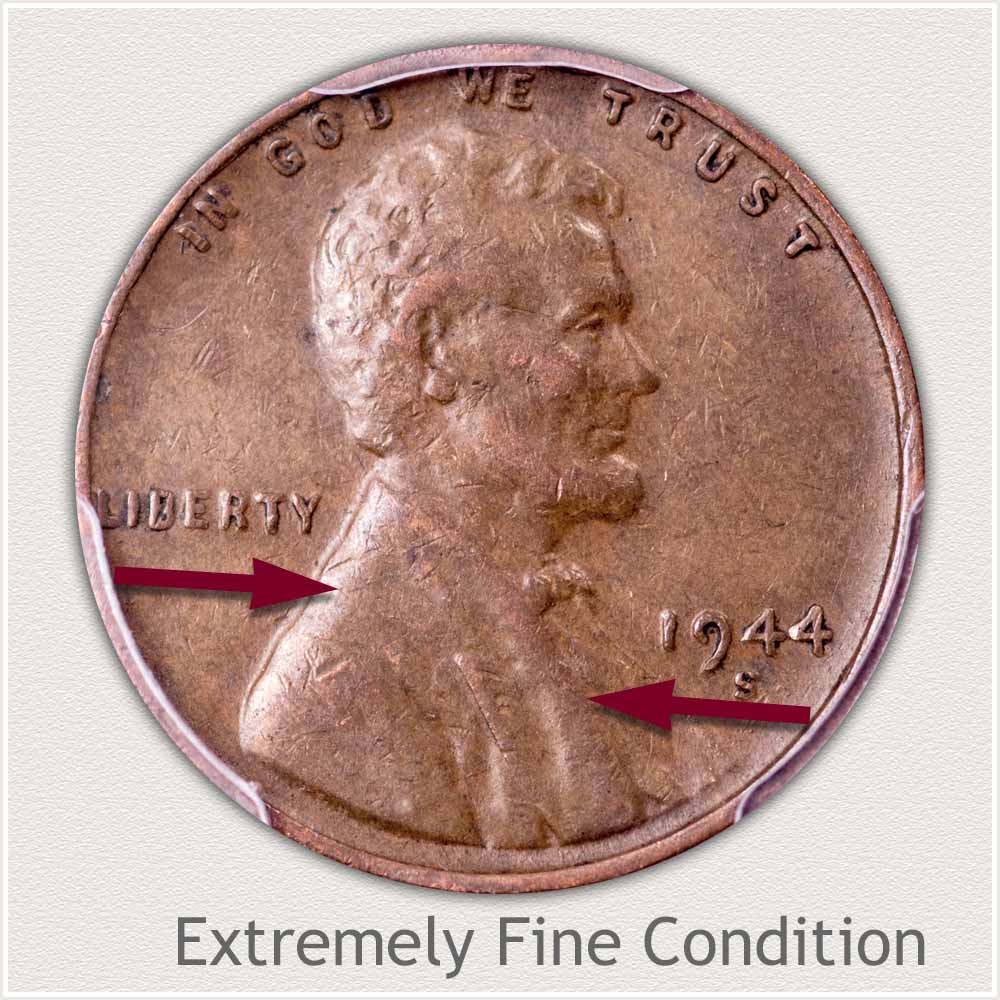
Extremely Fine Grade: Wheat pennies displaying light wear is an acceptable condition to a nice circulated collection. Light wear confined to small areas is defined; Extremely Fine grade.
High relief areas, prone to early wear run along Lincoln's shoulder and front edge of lapel. Expected in extremely fine condition is a small flat area at the edge of the lapel with smoothing on either side. Lincoln's shoulder shows light wear in spots; however, a strong collar line remains.
Eye appeal is important to circulated wheat cents. Pleasing coins are sought by collectors with a preference to ones without distractions. Common to these early copper cents is the tendency to tone very dark in color. The example wheat cent remains a warn shade of brown, bright enough in color to highlight the design.
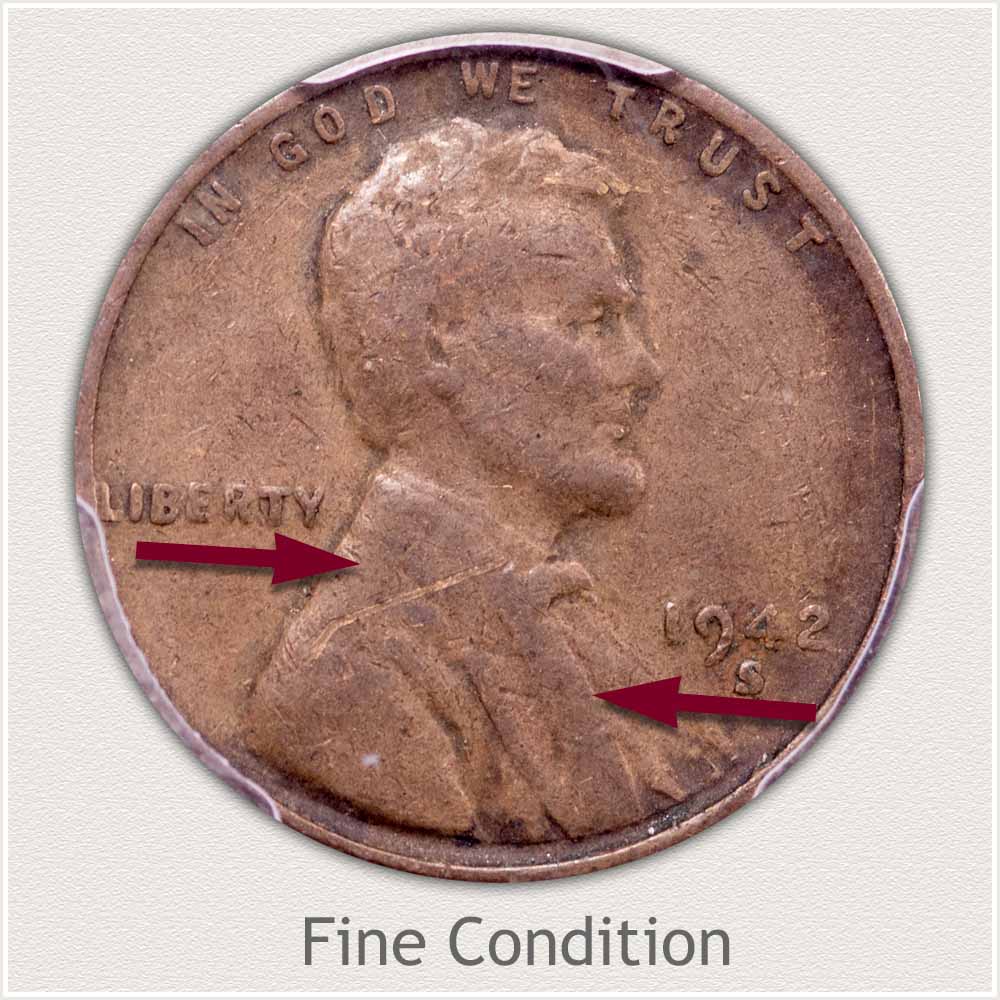
Fine Grade: A Fine grade wheat cent shows moderate wear towards the rim, with heavy wear flattening the central portion. Legends and date remain bold.
Lincoln's lapel is no longer high in profile. Wear now flattens the lapel in a wide line extending from the rim upwards continuous to the shoulder. The coat along the shoulder is smooth and merging with the collar line in places.
Many wheat pennies have worn to the fine grade and many are available to collectors today. With an ample supply to choose from, eye appeal is next considered. Large marks or deep scratches are absent from the example cent allowing it to remain a candidate to include into a collection.
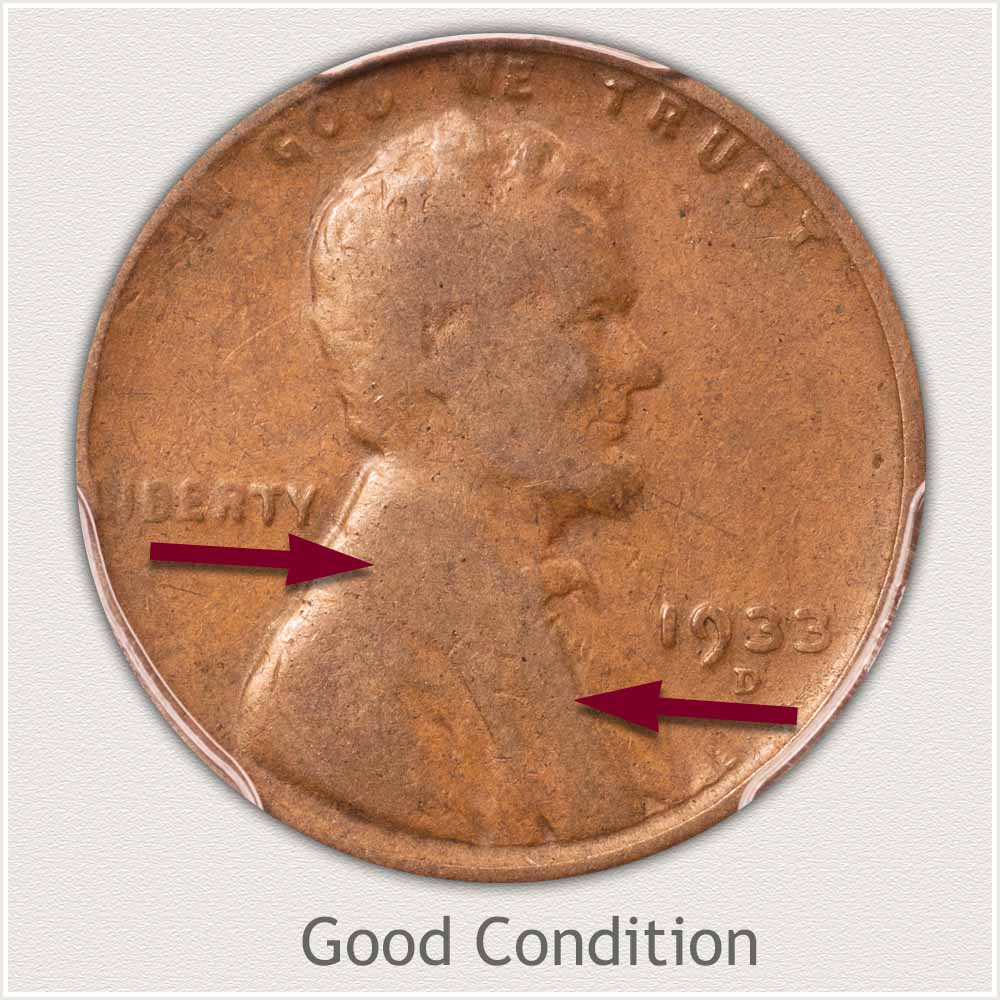
Good Grade: Wear removing the majority of design elements and wide areas of flatness defines the Good grade. Lincoln remains bold along with lettering and date readable.
Two main areas are mostly flat, Lincoln's facial features and his coat. Shoulder area of coat is a continuous flat plane from collar to rim. His lapel is now a wide smooth area with little definition separating it from the shirt collar.
Good condition wheat cent from the 1930's and 1940's are readily available, affordable, and excellent entry collectibles. Pennies with lighter shades of brown toning and surfaces relatively free of abrasion are sought and valued by new and young collectors.
Video | Grading Lincoln Wheat Pennies
Fine points to condition often separate a significant change in value. Grading Lincoln Wheat Pennies expands upon the grading process. Video plus descriptions focus on key elements to condition. Examine high value and high condition old pennies in greater detail.
Step 3: | Special Qualities Enhancing Value
Wheat Penny Circulation Find Errors
During the mid-1930's production of wheat cents was increasing yearly. By 1941 cents were struck in huge quantities. Quality control kept the number of error coins to a minute fraction of the total produced, however this scale of coinage was huge. Interestingly many of these off-quality pennies circulated without much notice.
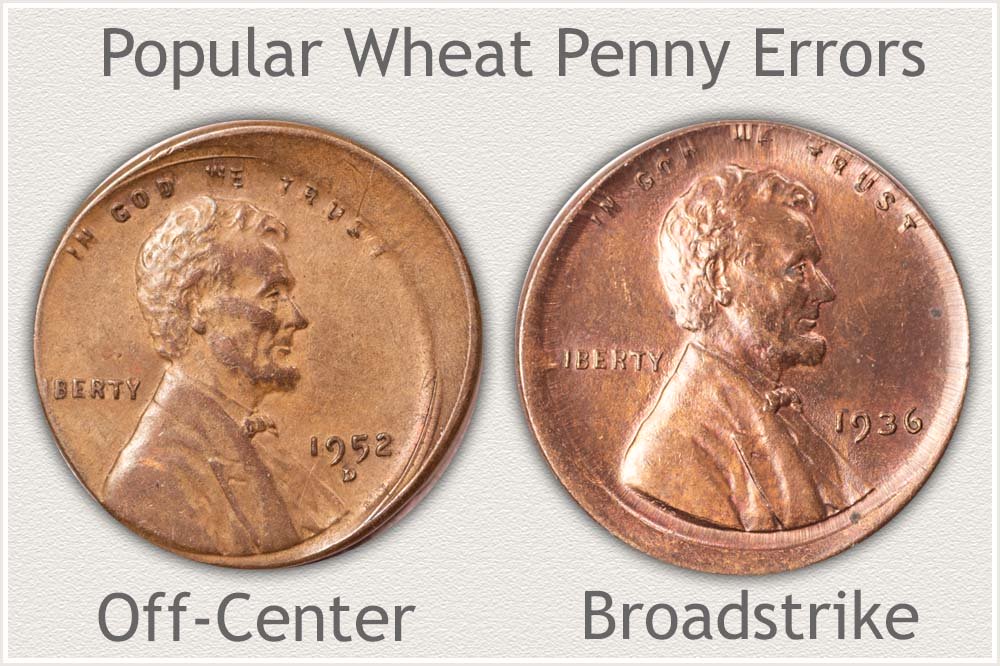
Today error coins have a following of collectors. Popular and prized are off-center strike wheat cents. The 1952 Denver cent is noticeable off center in strike. The 1936 is a "broadstrike" error, visually unusual because the retaining collar was not in place and when struck allowing the coin to spread outward. Both coins circulated long enough to show evidence of wear.
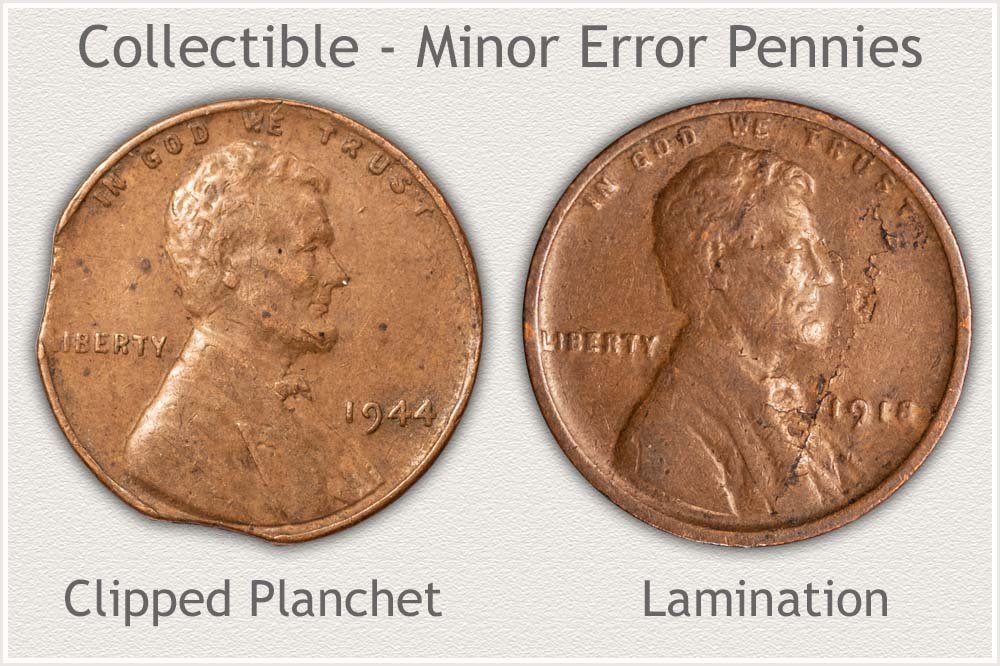
A minor error is the "clipped planchet" 1944 cent. Although less in popularity, it is obvious and this example displays two clips. The 1918 penny shows a fault in the alloy mixing and annealing process when preparing the metal for striking. A large lamination split is evident. This coin circulated long enough to grade in the good range. Lamination faults detract from a high grade 1918 but add interest to a heavily circulated example.
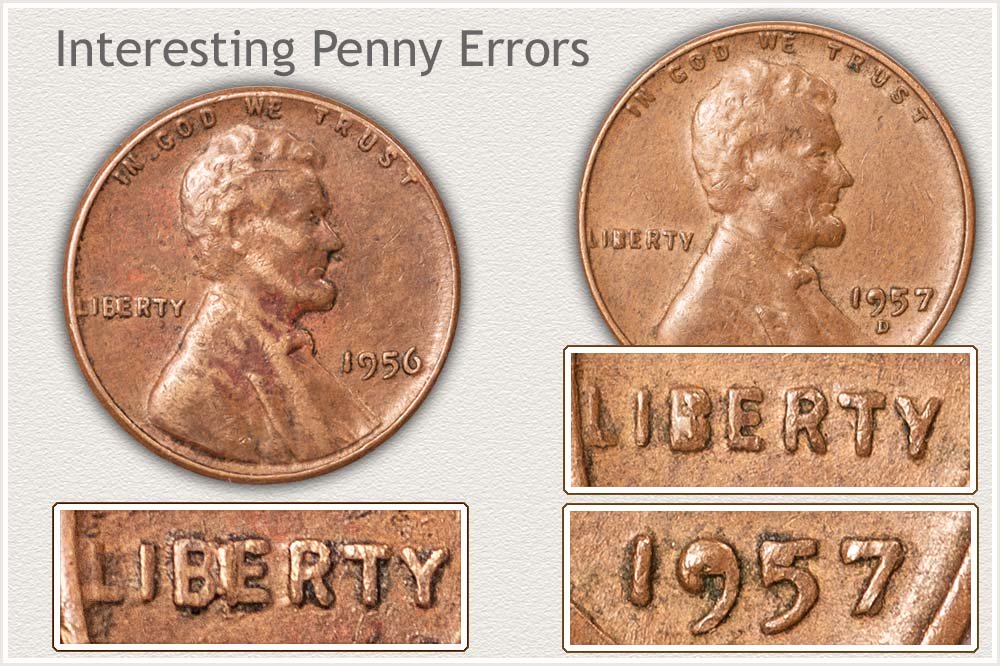
Coinage dies are susceptible to breakage in areas. Smaller details within lettering when broken on the die add extra metal to the finished coins. Some of these filled dies errors are popular and others have little interest and value. "BIE" errors are added metal within the lettering of LIBERTY giving the impression of misspelling. The 1956 shows the visual result of an "extra" letter. Often circulation finds are of no premium value. Die breaks are filling the "B" in Liberty of the 1957-D and parts of the date, interesting and informative but no current premium.
ReferencesUS Mint. 1942 US Mint Annual Report https://nnp.wustl.edu/library/publisherdetail/51
Coin Values | CoinStudy Articles
Lincoln Wheat cents span the years 1909 through 1958. From the top condition coins collected by advanced collectors to worn examples; to an affordable collection for young collectors, the range of value is extensive. Identify your date, mint and condition and refer to the value chart.
Printable sheet to list and inventory your coins.
★ Coin Values Discovery finds 1941 Penny Value and...
US coin value charts covering cents to gold. Identify your coins using the image links. Date | Mintmarks | Condition are described and imaged with each series. Small details necessary to accurately value are described.